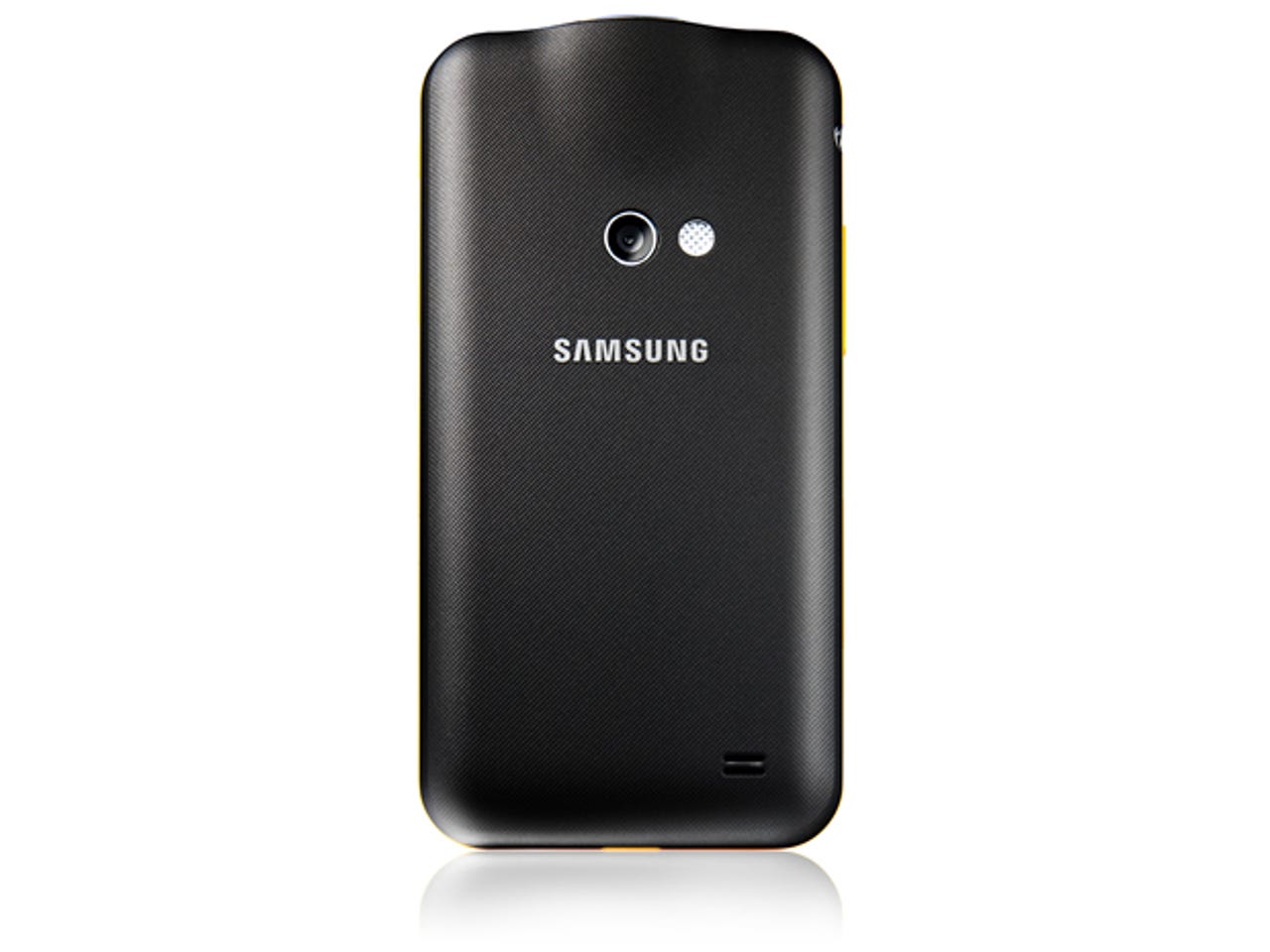Samsung Galaxy Beam: a projector/smartphone

It's an enticing idea, a phone with a built-in projector. Imagine being able to give presentations without having to carry a notebook or a tablet and its associated cables, or rely on WiDi and other equipment at a client's office being in working order. All you'd need is your phone with a charged battery and a blank wall on which to project.
That's what the Samsung Galaxy Beam offers, in addition to the usual Android smartphone features. It's available for £319 (ex. VAT) SIM-free from Clove Technology.
Samsung has been pretty clever with the Galaxy Beam's build, whose design is by no means dominated by the projector component. A bright yellow band running all around the edge has the dual function of making the phone look a little different from the norm and attracting the eye away from the bulge that the projector lens makes in the top edge.
The handset isn't a lot bigger or more unwieldy than other smartphones. At its thickest point, at the top where the projector sits, it measures about 15mm. Samsung doesn't include this in its specifications, preferring to quote the 12.5mm thickness of the two long and the lower short edges. This is slightly bulkier than you'd expect from a top-end handset, but it's unlikely to be a deal-breaker.
The projector does affect the phone's weight, which is an above-average 148g — although, again, this is by no means excessive. The projector displaces the headset jack from its usual ergonomic location on the top edge to a potentially pocket-snagging spot on the left edge. Also, the SIM and microSD slots are covered bays on the left and right sides respectively, rather than residing under the battery cover.
The projector is good, but not great. With a brightness rating of just 15 lumens, it needs quite dark conditions to deliver images you can actually see. The average office will be too brightly lit.
The further you move the device away from the projecting surface the larger and dimmer the image becomes. Samsung says the Galaxy Beam can handle about 2 metres, at which distance you'll get an image measuring 50in. across the diagonal. We found it was just about viable to about 3m and 60in., but you won't want to go further than that.

The projector can beam whatever is showing on-screen — be that web pages, a movie, streamed content or the product of any application. Samsung also provides a range of software utilities, including Quick Pad, with which you can draw on top of whatever the screen is showing, and Visual Presenter, which shows what the rear camera can see — effectively turning the Galaxy Beam into an overhead projector. Ambience Mode offers animations or video and photographic slideshows for relaxing backgrounds, and you can even use the projector's 15 lumens as an ultra-bright torch.
The projector inevitably takes a heavy toll on battery life. You'll probably get no more than three hours of projected data from the Galaxy Beam's 2,000mAh cell, and the average day between charges under ordinary (no projection) use. Fortunately, Samsung supplies two batteries.
As for the rest of the device, Samsung has produced an upper-mid-range smartphone. It's disappointing to see Android 2.3 (Gingerbread) here rather than Android 4.0 (Ice Cream Sandwich), but at least there's a dual-core 1GHz processor to speed things along, plus 8GB of internal storage and the aforementioned side-mounted microSD card slot for adding extra storage capacity.
The 5-megapixel rear camera has a flash unit, which is good, but the 4in. screen's 480-by-800-pixel resolution is lower than we'd like.
All in all, the Samsung Galaxy Beam is a great idea, but it needs work. There's a real 'wow' factor to a smartphone/projector, but 15 lumens isn't enough for this to be a viable professional's tool: currently, it's more of a handy standby than a main projector.